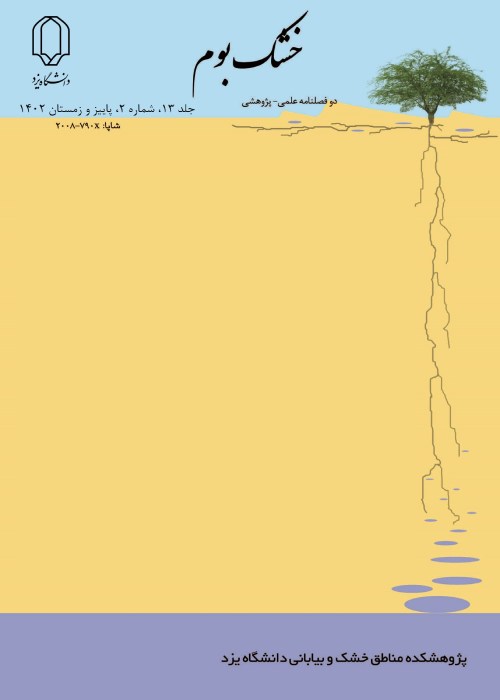Evaluation of salinity tolerance in Euphrates poplar (Populus euphratica Olive.) ecotypes using stress tolerance indices
The increasing of environmental stresses concerned identification of plants that have high performance in both normal and stress conditions. Ideal genotypes have high performance in normal conditions and show the fewest changes under stress. Euphrates poplar (Populus euphratica Olive.) is the unique poplar species in desert areas with high tolerance against some environmental stress, including salinity. This research was carried out with the objective of investigating the effects of different salinity levels on the yield of different ecotypes and introducing the best ecotype. In this study cuttings were taken from 12 ecotypes of Euphrates poplar in Iran and treated by salinity levels of 0, 75, 150, 225 and 300 mM NaCl. The research was conducted in Two-way Factorial arrangement on a CRD design with three replications. The yield and productivity index (diameter and height growth, biomass production; leaf, stem and root biomass (dry weight) and total biomass) showed significant difference (p<0.01%) in salt levels treatments and ecotypes. The indices such as MP, GMP, HarM, TOL, SSI and STI were evaluated for each ecotype and salt treatments. The Hamidyeh ecotype was located higher than others in Duncan’s Multiple Range Test; and 75 mM NaCl was located higher than other treatments. In fact, the salinity increases growth rates and Euphrates poplar showed some halophytes’ characteristics. There was a high positive correlation among yield and indices GMP, GMP and SSI; while there was a negative correlation among yield and indices HarM and TOL. There was no correlation between yield and STI (p<0.05). Therefore, SSI is a suitable indicator of stress tolerance. The cluster analysis divided the ecotypes into four groups: Jolfa, Manjil, Sarakhs, Gonbad, Dezful and Mahallat in the first group, Hamidieh and Masoumieh in the second group, Maranjab and Gilvan in the third group, and finally, Marand and Mahanshan in the fourth group.
- حق عضویت دریافتی صرف حمایت از نشریات عضو و نگهداری، تکمیل و توسعه مگیران میشود.
- پرداخت حق اشتراک و دانلود مقالات اجازه بازنشر آن در سایر رسانههای چاپی و دیجیتال را به کاربر نمیدهد.


